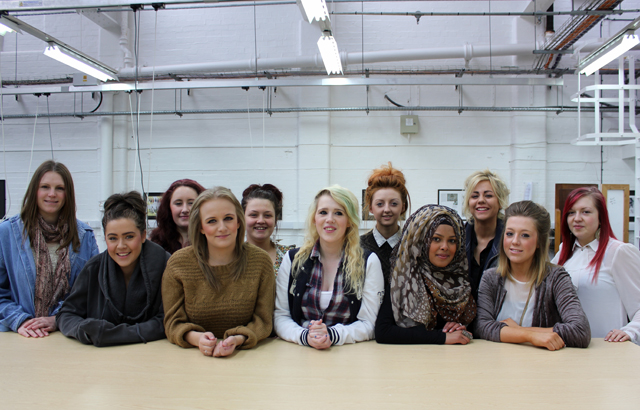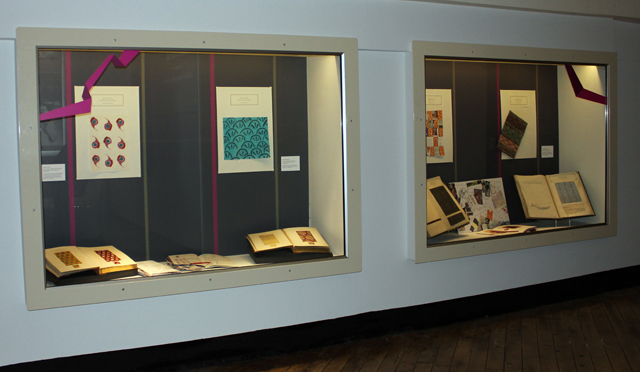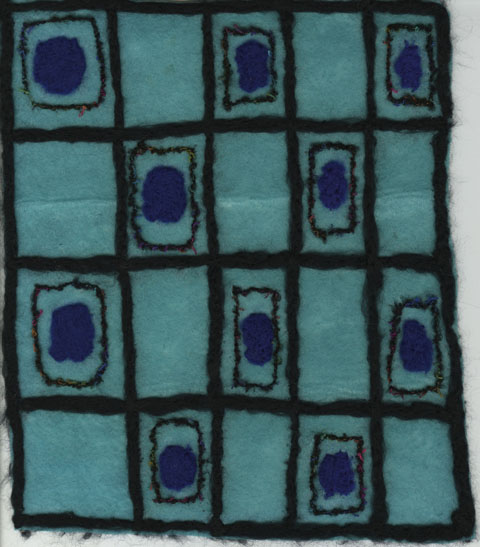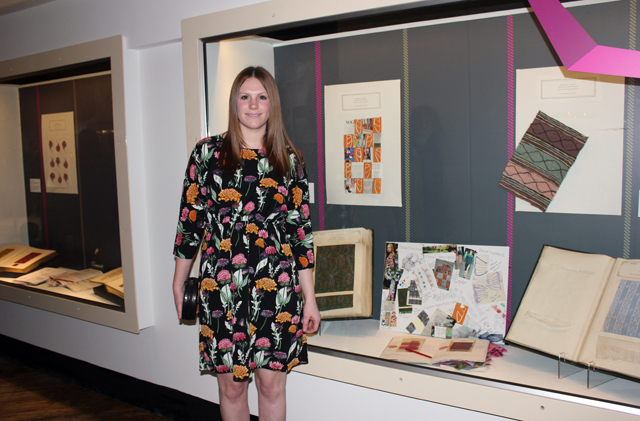
 Bradford Museums & Galleries worked with young people to develop a series of exhibitions, Precious Cargo in Bradford, as part of part of the Cultural Olympiad Stories of the World project. Golden Threads, which ran at Bradford Industrial Museum, from 19th May until 16th September 2012, explored Bradford’s textile heritage and made new connections with modern Bradford.
Bradford Museums & Galleries worked with young people to develop a series of exhibitions, Precious Cargo in Bradford, as part of part of the Cultural Olympiad Stories of the World project. Golden Threads, which ran at Bradford Industrial Museum, from 19th May until 16th September 2012, explored Bradford’s textile heritage and made new connections with modern Bradford.
A key strand of this story was the relationship with India, and since the Bradford Textile Archive at Bradford College holds twenty seven volumes of stunning fabric samples compiled by John Forbes Watson between 1866 and 1877, fashion students from Bradford School of Arts & Media were asked to participate by creating their own fabrics and designs in response to this internationally significant resource. A number of volumes of the Archive’s ‘Indian Collection’ were loaned for the exhibition so that the inspiration and the modern take upon it could be seen together.
 Lecturer Nicki Sheen set up and ran the project with students from the first year of the Level 3 Extended Diploma in Fashion & Textiles, who also take additional Level 2 Specialist Award in Textiles to enhance their knowledge. She explained, “They all did a variety of different textile processes based on the Indian Collection and observational drawing as part as their work for the Surface Pattern Unit. As well as having access to the original fabrics, they also used shells as an inspiration; evoking the idea of ‘precious cargo’ as they might wash up on shore and have been traditionally used as currency.”
Lecturer Nicki Sheen set up and ran the project with students from the first year of the Level 3 Extended Diploma in Fashion & Textiles, who also take additional Level 2 Specialist Award in Textiles to enhance their knowledge. She explained, “They all did a variety of different textile processes based on the Indian Collection and observational drawing as part as their work for the Surface Pattern Unit. As well as having access to the original fabrics, they also used shells as an inspiration; evoking the idea of ‘precious cargo’ as they might wash up on shore and have been traditionally used as currency.”
The students who worked on the project were Lauren Brook, Faye Carter, Jessica Gates, Rebecca Gaughan, Amy Gregson, Kaska Guy, Saleena Khatan, Rachel Nellist, Robyn Shaw, Amy Tetley and Amy Wainwright. They were all surprised at the vibrancy of the original Victorian fabrics and at how modern many of them appeared, and they were incredibly inventive in their approach to the task. For instance, Amy Wainwright added another local dimension to telling Bradford’s textile story in her piece which was also informed by the work of Sydney Harry, the pioneering colour theorist and artist, who taught at College for almost forty years. She said, “I also used shells and repeated patterns and used different media to experiment as my ideas developed. I tried shibori, needle felting, both by hand and machine and embroidery on dissolvable fabric. I also used a plastic bag and ribbon to create different stitching patterns and used the colours in a paper patchwork.” Faye Carter did lots of sketching in the Textile Archive as part of her research. She said, “I did a screenprint with a stencil on to a calico material. I also used recycled materials,  newspapers and magazines to make a patchwork piece inspired by a modern fashion designer called Jonathan Saunders and the half drop network (a bit like a brick but with a more spaces against them!) that has used in womenswear. The mix of old and new is very contemporary. I did lots of sketches in the Archive and found many paisley prints that reminded me of the vintage Liberty prints used in a current collaboration with Clarks footwear.”
newspapers and magazines to make a patchwork piece inspired by a modern fashion designer called Jonathan Saunders and the half drop network (a bit like a brick but with a more spaces against them!) that has used in womenswear. The mix of old and new is very contemporary. I did lots of sketches in the Archive and found many paisley prints that reminded me of the vintage Liberty prints used in a current collaboration with Clarks footwear.”
Sadly space restrictions did not allow the Museum exhibition to show all their work, but you can see it here: Student work for the Precious Cargo Project